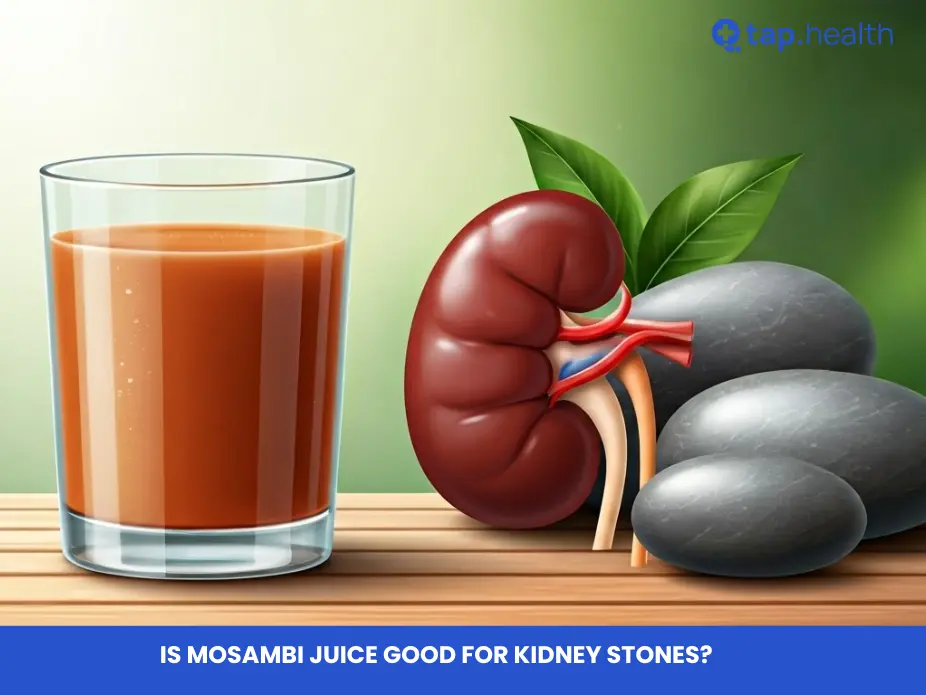Table of Contents
- Understanding Diabetes Symptoms: A Comprehensive Guide
- What Causes Diabetes? Risk Factors and Prevention
- Diabetes Prevention: Lifestyle Changes and Management
- Early Warning Signs of Diabetes: Recognizing the Symptoms
- Is It Diabetes? Diagnosing and Managing the Condition
- Frequently Asked Questions
Living with diabetes, or knowing someone who is, can be challenging. It’s a condition affecting millions, and understanding diabetes: symptoms, causes, and prevention is key to managing it effectively or even avoiding it altogether. This blog post will break down the essentials in a clear, concise way, helping you navigate the complexities of this chronic disease. We’ll explore common symptoms that might indicate a problem, delve into the underlying causes, and, most importantly, discuss practical steps you can take for prevention and better health. Let’s get started on your journey to better understanding this significant health concern.
Understanding Diabetes Symptoms: A Comprehensive Guide
Recognizing the Warning Signs
Diabetes is a silent thief, often sneaking up on people without a peep. A shocking 50% of cases worldwide go undiagnosed—that’s half the people living with diabetes who don’t even know it! The IDF Diabetes Atlas highlights this alarming statistic, especially concerning in regions like India and other tropical countries where diabetes rates are high. Early detection is your secret weapon, making timely management possible and preventing serious long-term issues. Want to learn more about spotting the early signs? Check out this great resource on 10 Early Signs and Symptoms of Diabetes.
Common Symptoms in Indian & Tropical Climates
Think increased thirst—like you could drink the ocean—and needing to pee constantly, especially noticeable during those sweltering tropical days. Unexplained weight loss, even with a healthy appetite, is another red flag. Imagine feeling perpetually exhausted, vision blurring, and even the smallest cuts taking forever to heal. Frequent infections? Another clue. These symptoms can be subtle initially, easily dismissed as something less serious.
Less Common but Important Symptoms
Beyond the usual suspects, some less common symptoms deserve your attention. Peripheral neuropathy, that tingling or numbness in your hands or feet, is a serious one, often ignored. Skin changes, like darkening of the skin (acanthosis nigricans) in those folds, or recurring skin infections—these warrant a call to your doctor.
Taking Action: A Call to Awareness
With so many undiagnosed cases, especially in India and tropical areas, proactive steps are crucial. Regular blood sugar checks are key, especially if diabetes runs in your family, or you’re noticing any of these symptoms. Don’t hesitate—see a doctor if you suspect something’s amiss. Early diagnosis means effective management, reducing the chances of serious complications down the line. Taking care of your health today is the best investment you can make for a healthier tomorrow.
What Causes Diabetes? Risk Factors and Prevention
Understanding the Roots of Diabetes in India and Tropical Countries
Diabetes – a silent epidemic affecting millions – hits especially hard in places like India and other tropical nations. The International Diabetes Federation Diabetes Atlas (https://diabetesatlas.org/data/en/world/) reveals a staggering statistic: 61% of those diagnosed are between 20 and 64 years old. Why this disproportionate impact? It’s a complex picture. Genetics play a part; some ethnicities are simply more susceptible. But lifestyle is the real game-changer. Think diets heavy on processed foods, sugary drinks, and refined carbs, combined with a sedentary lifestyle – a recipe for disaster.
Lifestyle and Environmental Factors
Obesity, a major culprit, is soaring in these regions due to shifting diets and less physical activity. Tropical climates add another layer of complexity. Dehydration, common in hot weather, can worsen existing health issues and even contribute to diabetes. Infectious diseases, more prevalent in some tropical areas, might also increase the risk. Even stress – financial worries, social pressures – can throw hormones out of whack, potentially leading to insulin resistance. It’s a perfect storm.
Preventive Measures for a Healthier Life
The good news? We can fight back. A diet packed with fruits, vegetables, and whole grains is your first line of defense. Regular exercise, even a brisk daily walk, makes a huge difference. Weight management is key, especially if diabetes runs in your family. Regular check-ups, including blood sugar monitoring, are crucial – especially for those at higher risk. And let’s not forget accessible healthcare and widespread awareness – these are absolutely vital.
Empowering Communities
Ultimately, preventing diabetes in these regions needs a community-wide effort. Public health campaigns promoting healthy lifestyles are crucial. Affordable and accessible healthcare, including regular screenings and educational programs, can lighten the burden significantly. By focusing on prevention and early intervention, we can empower communities to build healthier, diabetes-free futures.
Diabetes Prevention: Lifestyle Changes and Management
Taking Control of Your Health in Indian and Tropical Climates
Type 2 diabetes is one of the biggest health challenges in India and other tropical nations. The encouraging news? Nearly 80% of Type 2 diabetes cases can be delayed or even prevented with the right lifestyle changes. Small, everyday choices—when done consistently—can create a powerful impact on your long-term health. Government-backed research, like that highlighted by the Press Information Bureau of India (link), strongly supports this.
As we age, adopting and sticking to these changes becomes even more important. For more on this, explore our blog on Managing Diabetes as You Get Older.
Dietary Adjustments for Prevention
Your diet plays a huge role in diabetes prevention. Think of food as medicine for your body.
-
Eat more whole foods: Include plenty of fruits, vegetables, pulses, and whole grains. Fill your plate with color and variety.
-
Limit processed foods: Cut down on packaged snacks, sugary drinks, and refined carbs like white bread or sweets.
-
Use traditional spices: Indian spices such as turmeric and ginger have natural anti-inflammatory benefits and can support better health.
Simple swaps, like choosing roti made from whole wheat over refined flour, can make a big difference.
The Importance of Physical Activity
Movement is medicine too. Aim for 150 minutes of moderate exercise per week—that’s about 30 minutes a day, five days a week. Activities like brisk walking, yoga, cycling, or dancing all count.
-
Short bursts of movement throughout the day also help—climbing stairs, stretching at work, or a quick walk after meals.
-
Stay well-hydrated, especially in hot and humid climates, to keep your body functioning at its best.
Managing Weight and Blood Sugar
Maintaining a healthy weight greatly reduces your risk of developing diabetes. Even a 5–7% reduction in body weight can significantly lower the chances.
-
Regular check-ups are vital if diabetes runs in your family. Monitoring blood sugar levels early helps with prevention and timely treatment.
-
Talk to your doctor for personalized advice suited to your health, age, and lifestyle.
Sustainable Lifestyle Changes for Long-Term Success
Preventing diabetes isn’t about drastic overnight changes—it’s about building sustainable habits.
-
Start small: Add a 15-minute daily walk, switch to water instead of soda, or cook one extra home meal a week.
-
Gradually build consistency over time.
-
Support groups, family encouragement, and community health programs can make the journey easier.
Remember: caring for your health is not a one-time task—it’s an investment in a healthier, happier future.
Early Warning Signs of Diabetes: Recognizing the Symptoms
A Growing Concern, Especially in India and Tropical Countries
Diabetes is a global health crisis, but India faces a particularly alarming surge—a disproportionately high number of young adults, often between 25 and 40, are developing the disease. This trend is also seen in other tropical regions. Why? It’s a complex issue, linked to lifestyle changes and possibly even the impact of hot, humid climates. Ignoring early signs can lead to serious complications down the road, so awareness is key.
Spotting the Subtle Clues: Is It Diabetes?
Early diabetes symptoms are sneaky—they can easily be mistaken for everyday tiredness. Think: constantly feeling exhausted, even after a full night’s sleep? That’s a potential red flag. Other common indicators include:
- Frequent urination, especially at night (you might find yourself waking up multiple times to use the bathroom).
- Intense thirst, no matter how much you drink (feeling parched constantly).
- Unexplained weight loss, even if your appetite is normal.
- Blurry vision.
- Slow-healing sores or cuts.
- Tingling or numbness in hands or feet (peripheral neuropathy).
These symptoms aren’t always a guarantee of diabetes, but they’re definitely worth checking out with your doctor.
The Tropical Twist: Heat, Humidity, and Health
In hot, humid climates like those found in India, dehydration can worsen diabetes symptoms. Add to this the rise in less-than-ideal diets and sedentary lifestyles, and you have a perfect storm. Staying hydrated is extra crucial in these regions.
Taking Control: Prevention and Early Detection
Regular check-ups, including blood glucose testing, are essential, particularly if you have a family history of diabetes or lead a lifestyle that puts you at higher risk. Simple changes can make a huge difference:
- Eat a healthy diet: Load up on fruits, vegetables, and whole grains.
- Get regular exercise: Aim for at least 30 minutes most days of the week.
- Maintain a healthy weight: This is crucial for preventing or delaying the onset of diabetes.
If you’re noticing any of these symptoms, don’t delay: See your doctor. Early diagnosis and management are vital for a better quality of life. For more support, check out our guide: 10 Proven Tips for Effective Diabetes Management.
Is It Diabetes? Diagnosing and Managing the Condition
Understanding the Symptoms
Diabetes is becoming more common worldwide, especially in tropical regions like India. The tricky part? It often develops quietly. Symptoms such as:
-
Constant thirst
-
Frequent urination
-
Unexplained weight loss
-
Blurry vision
-
Slow-healing wounds
These signs are often ignored or mistaken for other issues. Without proper attention, diabetes can silently damage your health over time. That’s why early detection is so important.
Diagnosing Diabetes
The good news is that diagnosing diabetes is simple. A blood test can confirm it:
-
Fasting blood sugar test – measures blood sugar after not eating for 8 hours.
-
HbA1c test – shows your average blood sugar over the past 2–3 months.
If you’re overweight, physically inactive, or have a family history of diabetes, regular screening is vital. In many areas of India and other tropical regions, access to affordable tests is still limited—but it’s one of the most powerful tools for prevention and early treatment.
Managing Diabetes in Tropical Climates
Living with diabetes in hot and humid climates requires extra care:
-
Eat fresh, local produce – vegetables, whole grains, and seasonal fruits.
-
Exercise smart – choose early morning or evening to avoid heat stress.
-
Stay hydrated – dehydration can raise blood sugar levels.
-
Stick to medications – follow your doctor’s advice without skipping doses.
These steps help keep blood sugar under control and reduce the risk of complications.
Seeking Help and Support
Diabetes is a serious global concern. In fact, the number of people living with it is expected to rise from 536 million in 2021 to nearly 784 million by 2045. Don’t wait until symptoms worsen. See a doctor early, get tested, and follow a personalized management plan.
With early diagnosis and proper care, you can live a healthy, active life while managing diabetes.
Frequently Asked Questions on Diabetes
Q1. What are the common early warning signs of diabetes?
Common early warning signs include increased thirst and frequent urination, unexplained weight loss, blurry vision, slow-healing sores or cuts, and tingling or numbness in the hands or feet. However, these symptoms can be subtle and easily mistaken for other ailments, highlighting the importance of regular check-ups.
Q2. How is diabetes diagnosed, and why is early detection crucial?
Diabetes is diagnosed through a simple blood test measuring fasting blood sugar or HbA1c levels. Early detection is critical because it allows for timely management, reducing the risk of serious long-term complications. Many cases go undiagnosed, especially in India and tropical regions.
Q3. What lifestyle changes can help prevent or manage diabetes, particularly in tropical climates?
Maintaining a healthy weight through a balanced diet rich in fruits, vegetables, and whole grains, while limiting processed foods and sugary drinks, is crucial. Regular exercise, staying hydrated (especially important in hot climates), and regular blood sugar checks are also essential components of prevention and management.
Q4. What are the main risk factors for developing diabetes, and how prevalent is it in certain regions?
Risk factors include genetics, obesity, unhealthy diets high in processed foods and refined carbohydrates, sedentary lifestyles, and dehydration (particularly relevant in tropical climates). Diabetes is disproportionately prevalent in India and other tropical countries, with a significant number of cases undiagnosed.
Q5. Where can I find more information and support for managing diabetes?
For more information and support, consult your doctor for a personalized management plan and consider seeking support groups. Additional resources and articles on diabetes management and related topics are available online (links were provided in the source text).



